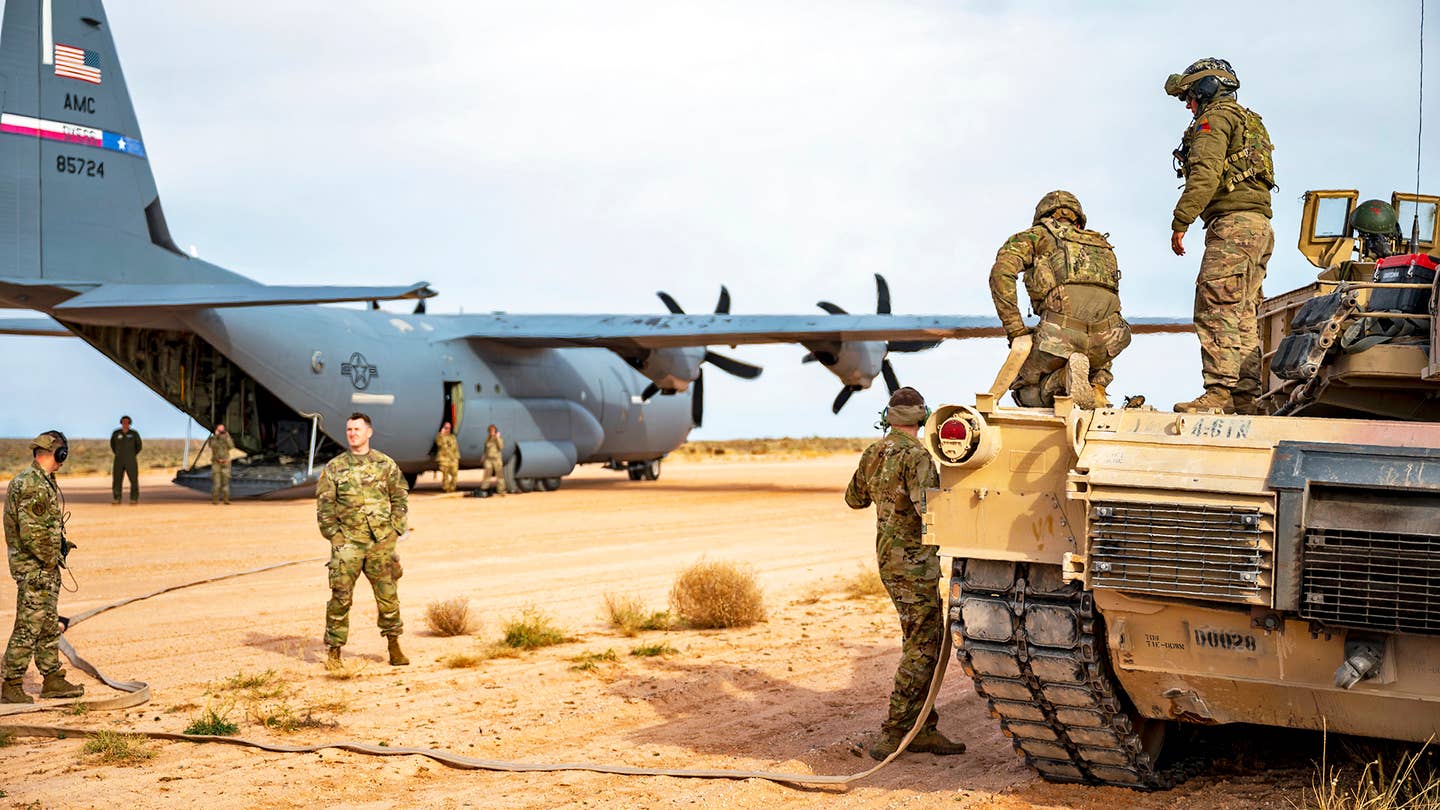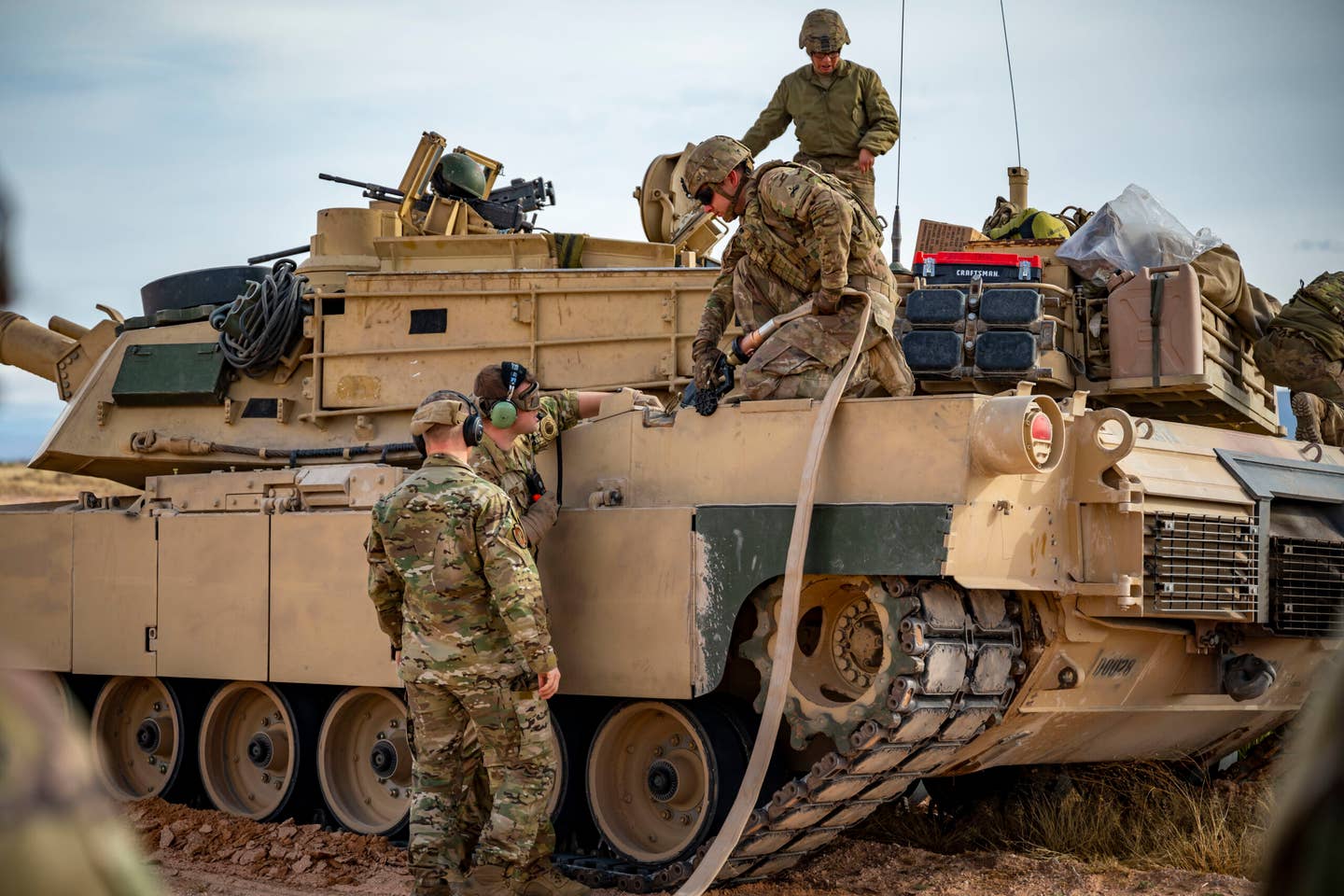The United States Army and Air Force recently conducted a Joint Refueling Operation in which they demonstrated how M1 Abrams tanks could be refueled utilizing a C-130J Super Hercules transport plane.
Images made available by the Defense Department show that the Refueling Joint Operations took place on December 9 at Fort Bliss in Texas.
The drill aimed to determine whether a Super Hercules aircraft could effectively refuel M1 Abrams tanks while the C-130J’s engines were running, a technique frequently used in an operational setting where dwell time must be kept to a minimum.
Along with participating in the refueling exercise, soldiers from the Fort Bliss-based 1st Armored Division and airmen from Dyess Air Force Base in the same state’s 40th Airlift Squadron also showed their service interoperability.
Both units engaged in a “dry run” during the exercise to evaluate its viability, familiarize themselves with the equipment and practice fueling procedures using an Emergency Response Refueling Equipment Kit (ERREK).
The Air Force defines an ERREK as specialized fueling equipment that “allows for interoperable and mobile fuel support” while employed for “hot pit” refueling.
In military aviation terminology, hot pitting refers to refilling an aircraft while the engines are still running. This is carried out to boost sortie generation rates, particularly in emergencies or conflict. Nonetheless, it is also used for training purposes.

In addition to accelerating the process of refueling, relaunching, and general turn-around, weapons can also be reloaded as part of the forward arming and refueling point (FARP) concept.
Nevertheless, hot pitting also allows for an extended time in the air while increasing the level of assurance, even during training.
In this instance, the C-130 is serving as the refueler while running its engines, and the Abrams might continue to operate with its engine on as well. There is nothing unusual about transport aircraft serving as impromptu refueling stations for other aircraft in remote areas.
It is a fundamental component of the Air Force’s newly developed battle doctrine, but doing so for tanks is a different matter. But, hot pit refueling an army tank with a cargo aircraft appears to be very rare.
Although it makes sense given that Army forces generally need enormous amounts of gasoline to sustain combat activities, especially in high-intensity operations as opposed to lower-intensity engagements.
The potential of a C-130 to “hot pit” refuel an M1 also highlights concerns about fuel supplies to distant locations in future wars.
US Army’s M1 Abrams tanks
The M1 Abrams is the most fuel-hungry of all the US Army’s equipment, with exceptionally high fuel needs. The M1 has high fuel demands due to its gas turbine propulsion system.
The tank is compatible with various fuel types, including diesel and jet fuel. Thus, the M1 is not constrained to running on a single fuel type.
The fact that the M1’s engine can operate on various fuels expands its alternatives in a pinch. However, it doesn’t alter the reality that a sizable amount of fuel is still needed to maintain its operations.
Depending on the mission and other environmental factors, the M1 can contain up to about 500 gallons of gasoline. It uses about 300 gallons per eight hours.

Furthermore, an M1 travels just about 0.6 miles per gallon and consumes about 60 gallons per hour while traveling long distances. It can travel approximately 250-300 miles on a single gas tank.
In a September drill, the Utah Air National Guard was tasked with ‘defueling’ a KC-135 tanker into an Army Heavy Expanded Mobility Tactical Truck.
This exercise allowed troops to practice discharging fuel from a tanker into a platform they may not have had prior experience with. It broadens the range of vehicles that the KC-135 may refuel, if required. It offers the airmen and Army’s fuel personnel practical training.
All in all, the recent hot pit exercise mirrors the aspirations of both the Air Force and Army to create and implement procedures that will expeditiously supply fuel to forward-operating units.
The Army and Air Force will team up once more for an “unstimulated” rendition of this hot pit refueling exercise sometime in 2023. Then, it will provide a better idea of how precisely the technique might fit into decentralized operations in the future.
- Contact the author at ashishmichel(at)gmail.com
- Follow EurAsian Times on Google News




